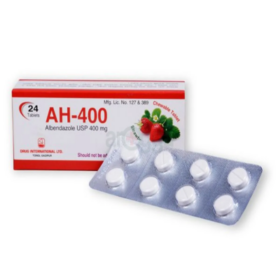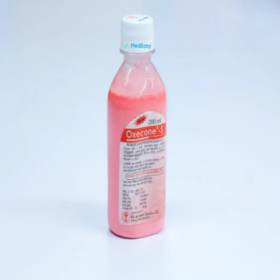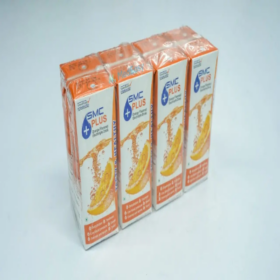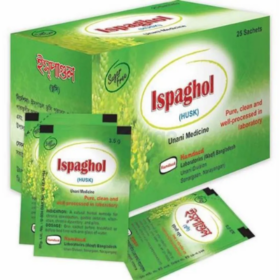- Your cart is empty
- Continue Shopping

Product

Hi-C 100 mg/5 ml
৳ 29.99 ৳ 33.32
Medicine overview
Indications of Hi-C 100 mg/5 ml
Ascorbic Acid (Vitamin C) is indicated in- Prevents & treats scurvy Helps in healing wounds & broken bones Helps to form collagen in connective tissues Aids in iron absorption & helps to treat anemia Contributes in production of hemoglobin & red blood cell in bone marrow … Read moreAscorbic Acid (Vitamin C) is indicated in- Prevents & treats scurvy Helps in healing wounds & broken bones Helps to form collagen in connective tissues Aids in iron absorption & helps to treat anemia Contributes in production of hemoglobin & red blood cell in bone marrow Aids in preventing many types of viral and bacterial infections and potentiates the immune system Aids in the treatment & prevention of the common cold Promotes healthy capillaries, gums & teeth
Theropeutic Class
Vitamin-C Preparations
Pharmacology
vitamin C, the water-soluble vitamin, is readily absorbed from the gastrointestinal tract and is widely distributed in the body tissues. It is believed to be involved in biological oxidations and reductions used in cellular respiration. It is essential for the synthesis of collagen and intracellular material. Vitamin C deficiency develops when the dietary intake is inadequate and when increased demand is not fulfilled. Deficiency leads to the development of well defined syndrome known as scurvy, which is characterized by capillary fragility, bleeding (especially from small blood vessels and the gums), anaemia, cartilage and bone lesions and slow healing of wounds.
Dosage & Administration of Hi-C 100 mg/5 ml
Oral administration- For the prevention of scurvy: 1 tablet daily For the treatment of scurvy: 1-2 tablets daily; but dose may be increased depending on the severity of the condition. For the reduction of risk of stroke in the elderly: 1-2 tablets daily. In other cases: 1 tablet daily or as directed by the physician. Maximum safe dose is 2000 mg daily in divided doses. Parenteral administration- Vitamin C is usually administered orally. When oral administration is not feasible or when malabsorption is suspected, the drug may be administered IM, IV, or subcutaneously. When given parenterally, utilization of the vitamin reportedly is best after IM administration and that is the preferred parenteral route. For intravenous injection, dilution into a large volume parenteral such as Normal Saline, Water for Injection, or Glucose is recommended to minimize the adverse reactions associated with intravenous injection. The average protective dose of vitamin C for adults is 70 to 150 mg daily. In the presence of scurvy, doses of 300 mg to 1 g daily are recommended. However, as much as 6 g has been administered parenterally to normal adults without evidence of toxicity. To enhance wound healing, doses of 300 to 500 mg daily for a week or ten days both preoperatively and postoperatively are generally considered adequate, although considerably larger amounts have been recommended. In the treatment of burns, doses are governed by the extent of tissue injury. For severe burns, daily doses of 1 to 2 g are recommended. In other conditions in which the need for vitamin C is increased, three to five times the daily optimum allowances appear to be adequate. Parenteral drug products should be inspected visually for particulate matter and discoloration prior to administration, whenever the solution and container permit.
Dosage of Hi-C 100 mg/5 ml
Oral tablet administration: For the prevention of scurvy: 1 tablet daily For the treatment of scurvy: 1-2 tablets daily; but dose may be increased depending on the severity of the condition. For the reduction of risk of stroke in the elderly: 1-2 tablets daily. In other cases: 1 tablet daily or as directed by the physician. Maximum safe dose is 2000 mg daily in divided doses. Oral sachet administration: 1 sachet daily or as directed by registered physician. Maximum Dose: 2000 mg/day (4 sachets/day). Parenteral administration: Vitamin C is usually administered orally. When oral administration is not feasible or when malabsorption is suspected, the drug may be administered IM, IV, or subcutaneously. When given parenterally, utilization of the vitamin reportedly is best after IM administration and that is the preferred parenteral route. For intravenous injection, dilution into a large volume parenteral such as Normal Saline, Water for Injection, or Glucose is recommended to minimize the adverse reactions associated with intravenous injection. The average protective dose of vitamin C for adults is 70 to 150 mg daily. In the presence of scurvy, doses of 300 mg to 1 g daily are recommended. However, as much as 6 g has been administered parenterally to normal adults without evidence of toxicity. To enhance wound healing, doses of 300 to 500 mg daily for a week or ten days both preoperatively and postoperatively are generally considered adequate, although considerably larger amounts have been recommended. In the treatment of burns, doses are governed by the extent of tissue injury. For severe burns, daily doses of 1 to 2 g are recommended. In other conditions in which the need for vitamin C is increased, three to five times the daily optimum allowances appear to be adequate. Parenteral drug products should be inspected visually for particulate matter and discoloration prior to administration, whenever the solution and container permit.
Interaction of Hi-C 100 mg/5 ml
Potentially hazardous interactions: Ascorbic acid is incompatible in solution with aminophylline, bleomycin, erythromycin, lactobionate, nafcillin, nitrofurantoin sodium, conjugated oestrogen, sodium bicarbonate, sulphafurazole diethanolamine, chloramphenicol sodium succinate, chlorthiazide sodium and hydrocortisone sodium succinate.Useful interactions: Ascorbic acid increases the apparent half-life of paracetamol and enhances iron absorption from the gastrointestinal tract.
Side Effects of Hi-C 100 mg/5 ml
Vitamin C has little toxicity and only mega-doses of vitamin C may cause diarrhoea, abdominal bloating, iron over-absorption that is harmful in patients with thalassaemia, sideroblastic anemia, and haemochromatosis; hyperoxaluria, hyperuricosuria, and hemolysis in patients with glucose-6 phosphate dehydrogenase deficiency. A pregnant woman taking more than 5 gm/day may suffer fetal abortion.
Pregnancy & Lactation
The drug is safe in normal doses in pregnant women, but a daily intake of 5 gm or more is reported to have caused abortion. The drug may be taken safely during lactation.
Precautions & Warnings
Ingestion of megadose (more than 1000 mg daily) of vitamin C during pregnancy has resulted in scurvy in neonates. Vitamin C in mega-doses has been contraindicated for patients with hyperoxaluria. Vitamin C itself is a reactive substance in the redox system and can give rise to false positive reactions in certain analytical tests for glucose, uric acid, creatine and occult blood.
Storage Conditions
Should be stored in a dry place below 30˚C.
Drug Classes
Vitamin-C Preparations
Mode Of Action
This is a preparation of Ascorbic Acid (Vitamin C). Ascorbic Acid is an essential nutrient, which means it cannot be produced by the body and therefore must be obtained from diet or supplements. Ascorbic Acid has many important functions. It is required for tissue growth & repair, Adrenal gland function, enhanced immunity & healthy gums. As an antioxidant, it gives protection against harmful pollution, infection & reduces cellular damage. As a coenzyme, it is a necessary factor for wound healing, drug metabolism & metabolism of cholesterol & folic acid. As an essential nutrient, vitamin C supports healthy hair & skin, strengthens the immune system and maintain overall good health.
Pregnancy
The drug is safe in normal doses in pregnant women, but a daily intake of 5 gm or more is reported to have caused abortion. The drug may be taken safely during lactation.
Disclaimer
The information provided is accurate to our best practices, but it does not replace professional medical advice. We cannot guarantee its completeness or accuracy. The absence of specific information about a drug should not be seen as an endorsement. We are not responsible for any consequences resulting from this information, so consult a healthcare professional for any concerns or questions.
Additional Information
| Quantity | 100 ml bottle |
|---|
Be the first to review “Hi-C 100 mg/5 ml” Cancel reply
Related products
Sale
Sale
Sale
Sale
Sale
Sale
Sale










Reviews
There are no reviews yet.